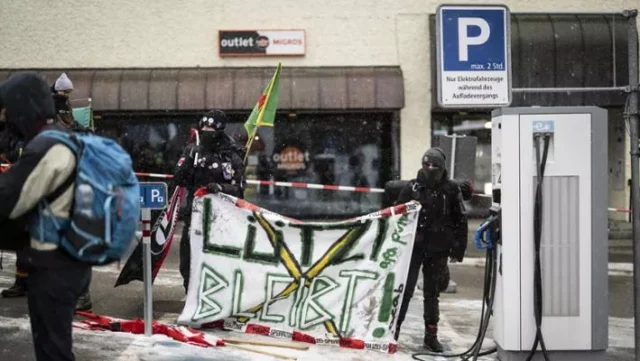Oxfam: “Hunger is increasing in the world, but in the first two years of the pandemic, 1% of the planet has hoarded 63% of the new global wealth”.
Poverty is Imperceptible
In Davos which today welcomes the mighty of the earth for the World Economic Forum, poverty is imperceptible. The helicopters carrying heads of state, policy makers and CEOs fly over the Graubünden town non-stop. Outside, the pandemic has amplified inequalities. The NGO Oxfam denounces that in the first two years of Covid-19 the richest 1% of the planet saw the value of their assets grow by 26 trillion dollars, hoarding 63% of the total increase in global net wealth, equal to about 42 trillion. “For the first time in 25 years – it says – extreme wealth and extreme poverty are increasing simultaneously”. War in Ukraine, inflation at its highest in recent decades and financial instability, warns Oxfam, could worsen the already precarious situation of families.
World Populations
The divisions have become sharper and wider. 1% of the world’s population turns out to be richer than ever three years after the appearance of Sars-Cov-2 in Europe. But at the same time, the poor are even more so. As Oxfam explains, since 2020, “a billionaire has, on average, increased his wealth by about $1.7 million for every dollar of wealth increase of a person in the bottom 90%. Despite the stock market crash in 2022, “the fortunes of billionaires have nonetheless increased at a rate of $2.7 billion a day over the past three years, after a decade that saw the number of scrooges and their net worths double.” Specifically, the report explains, last year there were two sectors that benefited from the situation on the financial markets. The energy sector and the agro-food sector. «In 2022, 95 companies, including the big energy companies and food multinationals, more than doubled their profits compared to the average for the four-year period 2018-2021, paying 257 billion dollars (84% of the extra profits made) to wealthy shareholders,” the report notes.
Emblematic is the case of the Walton dynasty, owner of half of Walmart, “which received dividends of 8.5 billion dollars in the last year”. Even more surprising, the study highlights, is the situation of the Indian billionaire Gautam Adani, a key shareholder in many large energy companies, who in just seven months has seen his wealth increase by 42 billion dollars (+46%). This phenomenon has occurred on all continents, fueling inflation in Australia, the United Kingdom and the United States, Oxfam notes.
And right on the front of the price flare-ups another cold shower arrives. “At least 1.7 billion workers live in countries where inflation exceeds the average increase in wages and over 820 million people – about 1 in 10 people on Earth – suffer from hunger”, explains the NGO’s analysis. The risks are to the downside, and as the World Bank points out, “we are probably seeing the largest increase in global inequality and poverty since the Second World War”. Whole countries, warns Oxfam, “risk bankruptcy and the poorest countries today spend 4 times more to repay their debts than they allocate for public health spending”. Not only that: “Three-quarters of the world’s governments (148 countries) are planning cuts in public spending – including for health and education – for 7,800 billion dollars in the five-year period 2023-2027”.
There are no simple solutions. Oxfam tries to suggest the way of taxing the richest. Gabriela Bucher, executive director of Oxfam International, calls for “a fairer tax system, starting with a higher levy on the wealthiest individuals”. According to her, Bucher would take very little to change the paradigm: “A 5% tax on large estates could free up to 2 billion people from poverty”. On balance, it would be 1,700 billion dollars a year, more or less the GDP of Italy. It will be crucial for the powerful of the earth to find ways to mitigate the inequalities before they grow again and again, to the point of no return.
This article is originally published on lastampa.it







